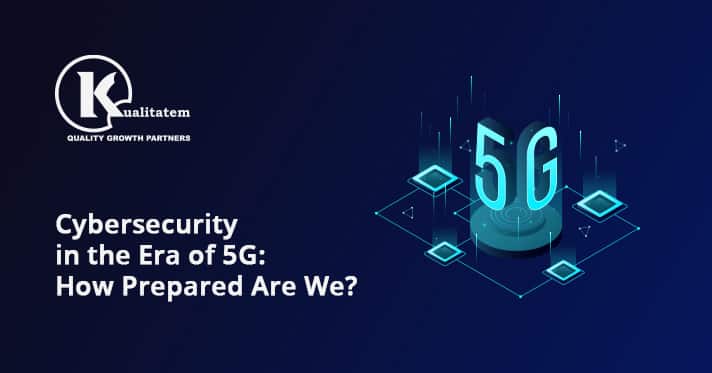Cybersecurity in the Era of 5G: How Prepared Are We?

- November 29, 2019
- HibaSulaiman
5G is no longer a futuristic idea, but a reality. 5G networks are the next generation of technology for mobile internet connectivity. Enterprises have already started switching to 5G that marks a new era. It is expected to offer a plethora of benefits such as increased data speed, lower latency on network response time and improved reliability. At the same time, new cyber security threats are expected to increase. This is why businesses should be prepared to face these dangers. Software testing companies should improve their cyber security testing services to keep enterprises protected from such cyber threats.
5G and Internet of Things (IoT)
By 2020, 5G networks are expected to expand worldwide. These networks are expected to cause a huge rise in the IoT and make the world more connected. History has taught us that rapid technological changes and its adoption can cause disruption in businesses. In this era, cyber attacks can affect your business and compromise your customers’ sensitive information. Your connected IoT devices could also be affected by posing great threats to your networks. If cyber criminals manage to breach IoT devices it can pose great damage to your business. According to a report by Gartner, two-thirds of firms plan to deploy 5G in less than a year, which means firms need to prepare for a new wave of cyber threats. Thus, a cyber security testing company is looking for possible flaws in 5G and how firms can protect their businesses.
Security Flaws in 5G can Help Bolster Cyber Attacks
There are five ways in which 5G networks are more vulnerable to cyber attacks:
- Less Control – Previously, 3G and 4G networks were hub-and-spoke designs where everything came to hardware choke points. It was easier to ensure cyber security but with a distributed, software-defined digital routing, it is impossible to inspect and control any cyber threats.
- Artificial Intelligence Vulnerabilities – Artificial intelligence is already being used to manage networks. Even if firms managed to lock down vulnerabilities within a network, AI can be vulnerable too. If an attacker gains control of the AI software managing networks can also control the network.
- 5G gets Complicated – Network functions were previously performed by physical appliances. 5G will virtualize these networks that can be helpful tools for cyber attackers.
- Hackable Smart Devices – Another vulnerability 5G is that there are billions of hackable smart devices attached to networks. Hackers discover insecure IoT devices where they can plant malware.
- Expansion of Bandwidth – 5G creates additional vulnerabilities in networks due to the expansion of bandwidth. Hackers target low cost and short-range antennas deployed throughout urban areas. 5G’s Dynamic Spectrum Sharing capability will be used in these cell sites which means the cyber risk increases. Cyber protection should also be improved when networks shift.
The introduction of 5G will have a great impact on the cyber security landscape. It is important that testing companies take time to assess and update their cyber security testing services. They need to deploy a thorough asset management system to keep track of their presence. To sustain in the market firms need to adopt security standards that can be beneficial in facing the disruption caused by 5G technology.











